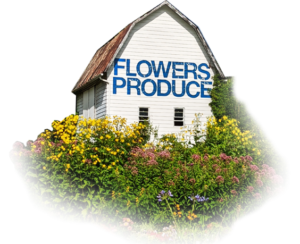The native plants of Avonlea Gardens have been categorized using the terms “native” and “native variety.”
What is a native?

Native is synonymous with the term “straight species.” I like this definition of a native from the University of Maryland Extension: “A native plant is one that occurs naturally in an ecoregion and habitat, where over the course of evolutionary time, it has adapted to the physical conditions and co-evolved with the other species in the ecosystem.”
The word “native” is usually used with a geographic qualifier, such as “native to North America” or “native to Ohio.” The more definite and specific the nativity, the better for the environment. For Avonlea Gardens, when I list a plant in our inventory as native, I generally mean native to North America.
However, I have created a list identifying those plants in our inventory that are native specifically to Ohio – and I am happy to say, most of our native plants are! (This Excel spreadsheet is available for download – just click the button above!)
If you wish to be even more geographically specific, I recommend visiting the website USDA PLANTS database at https://plants.usda.gov/home. Zoom in on the distribution map to see if a plant is native to your county.
What is a native variety?
A native variety is a cultivar of a native plant, also referred to as a “nativar.” A cultivar is a plant variety that has been produced by humans via selective breeding.
Do native varieties or cultivars provide for our native wildlife? It depends on which plant trait of the straight species was genetically modified.
A research team including Doug Tallamy, Professor in the Department of Entomology and Wildlife Ecology at the University of Delaware, performed a study funded by the Mt. Cuba Center to test this question. Six commonly cultivated plant characteristics of woody plants were tested for effect on insect herbivory: compactness of size, disease resistance, increased berry size, enhanced fall color, changing leaf color from green to red or purple, and variegation of leaf color.
The only cultivated characteristic that consistently deterred insect feeding (and reduced the wildlife value) was changing the color of a green leaf to red or purple. (To make a leaf red or purple is to change the leaf chemistry, adding anthocyanin pigments which are feeding deterrents.)
“Among other studied characteristics—enhanced fruiting, fall color, leaf variegation, disease resistance, and altered growth habit—there was no observable decrease in insect foraging, and in some cases the cultivars were more attractive than the wild types.”
Read the full research paper here.
When deciding to buy a cultivar, it is a good idea to research how the plant has been changed from the straight species to ensure that cultivation has not decreased the wildlife value.
Should you have any questions on this or anything else, please feel free to ask!

 We are a family-owned nursery and inn in charming Chardon, Ohio.
We are a family-owned nursery and inn in charming Chardon, Ohio. For a cozy stay, book the entire house or the individual Rose (upstairs) and Bluebell (downstairs) Suites in our vintage-style century home Inn.
For a cozy stay, book the entire house or the individual Rose (upstairs) and Bluebell (downstairs) Suites in our vintage-style century home Inn.